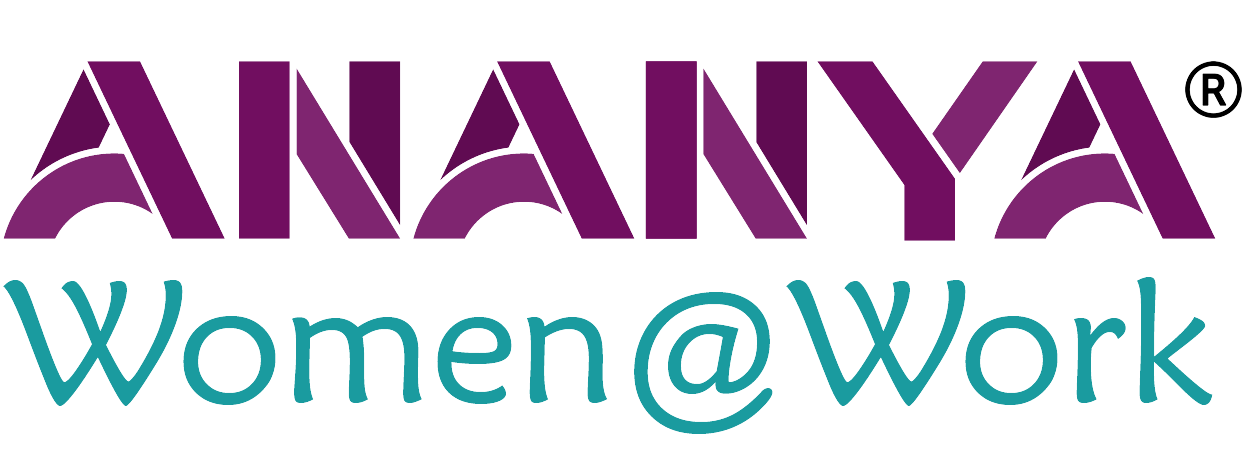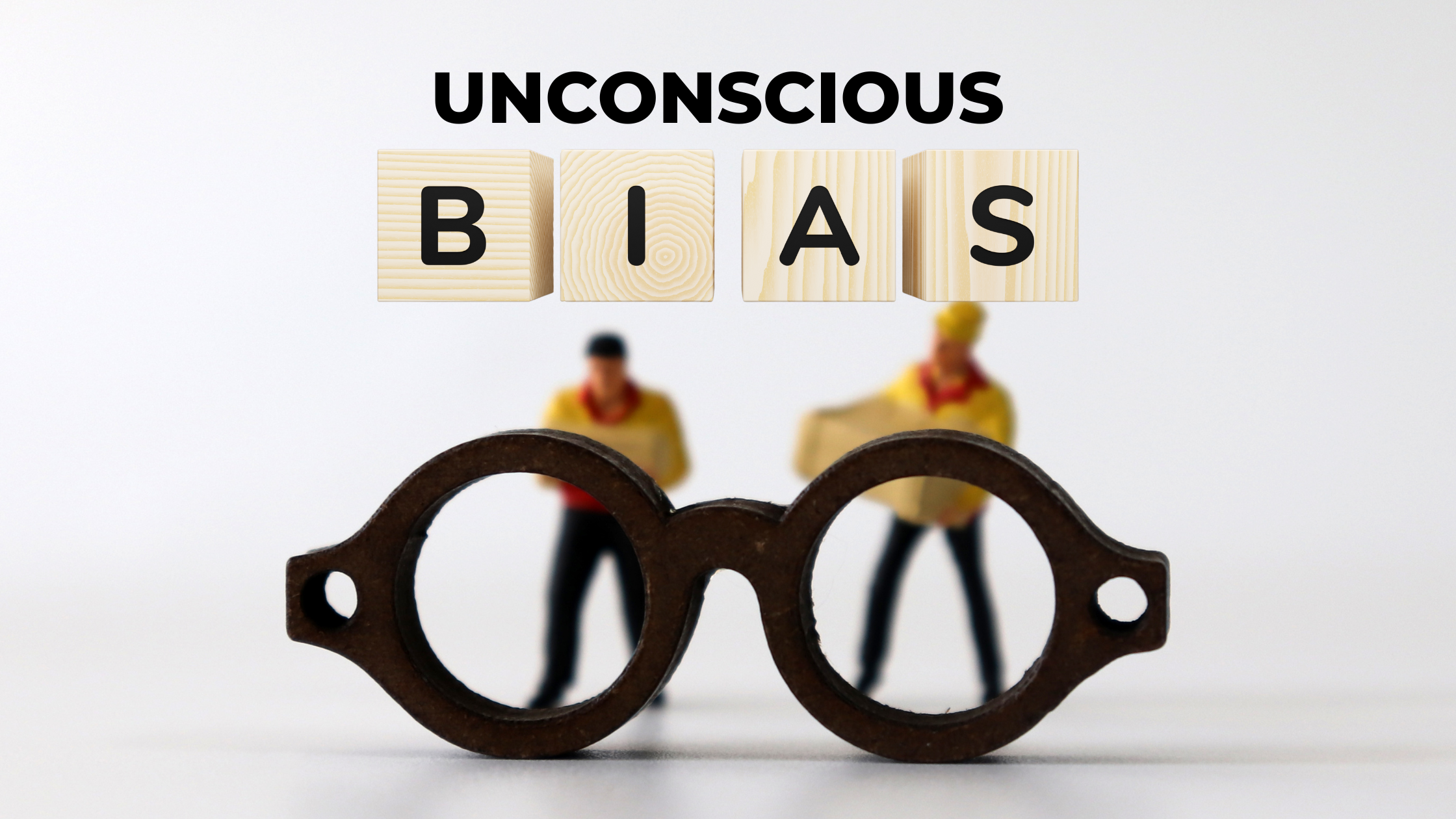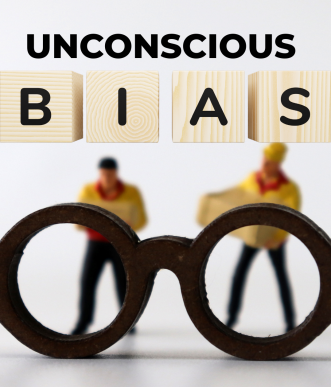What is Unconscious Bias? Why Does it Matter?
Have you ever made a quick judgment about someone without even realising it? Maybe you just made your decision about them based on the way they spoke, dressed, looked, or just your gut feeling. That’s unconscious bias at work—and it happens to all of us.
Most people believe they are rational in their decision-making, and they use logic and facts. In reality, our decisions are based on our upbringing, past experiences, and how we perceive the world around us. The impact of our people decisions is more pronounced at work. It guides us to prefer some people over others, without any rationale. For example, we might assume someone is less capable because of their age or gender. Or we might give someone more opportunities just because they remind us of ourselves. This can affect hiring, performance reviews, and everyday team interactions.
The tricky part? Most of the time, we don’t even realize we’re doing it.
So, what can we do about it?
The first step is acknowledging that unconscious bias exists. From there, we can start having honest conversations, reflect on our thinking, and take part in trainings that help us notice and challenge these hidden patterns. The important thing is to understand that having an unconscious bias does not make us a “bad person,” but it could lead us to making suboptimal decisions.
Building a workplace where fairness, respect, and diversity are truly valued takes effort. But it’s worth it. Not only does it lead to better decisions and stronger teamwork, it also builds trust, improves relationships, and helps the whole organization thrive.
Common Biases in Every Stage of Employee Life Cycle:
- Affinity bias
- Confirmation bias
- Gender bias
- Beauty bias
- Stereotype bias
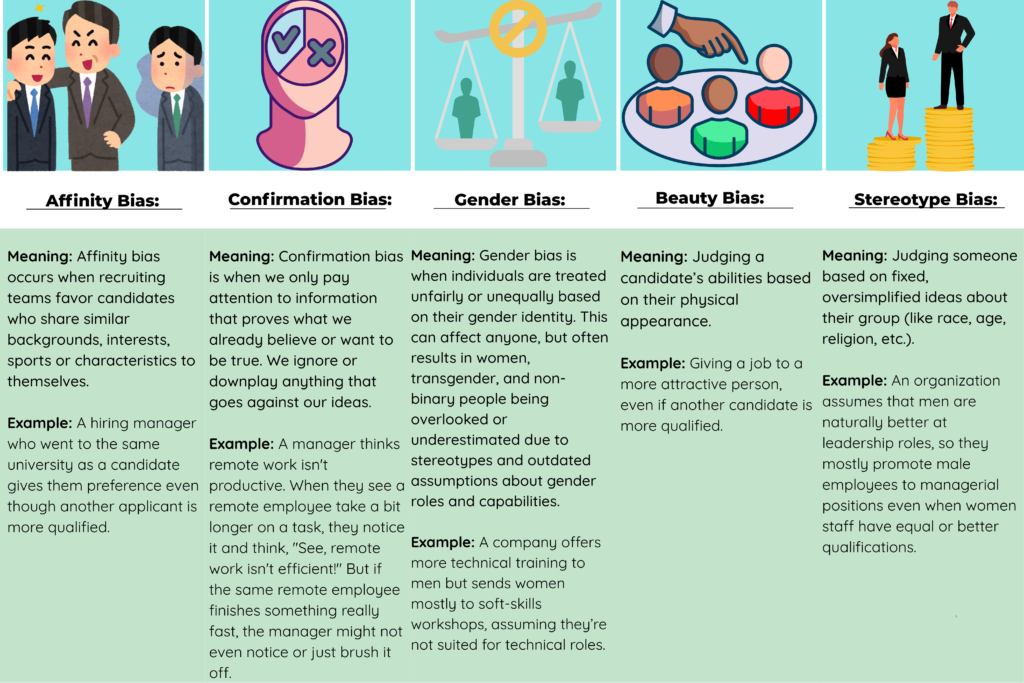

1. Common Biases in Attraction and Recruitment:
- Age bias
- Expectation anchor bias
- Halo
- Horn
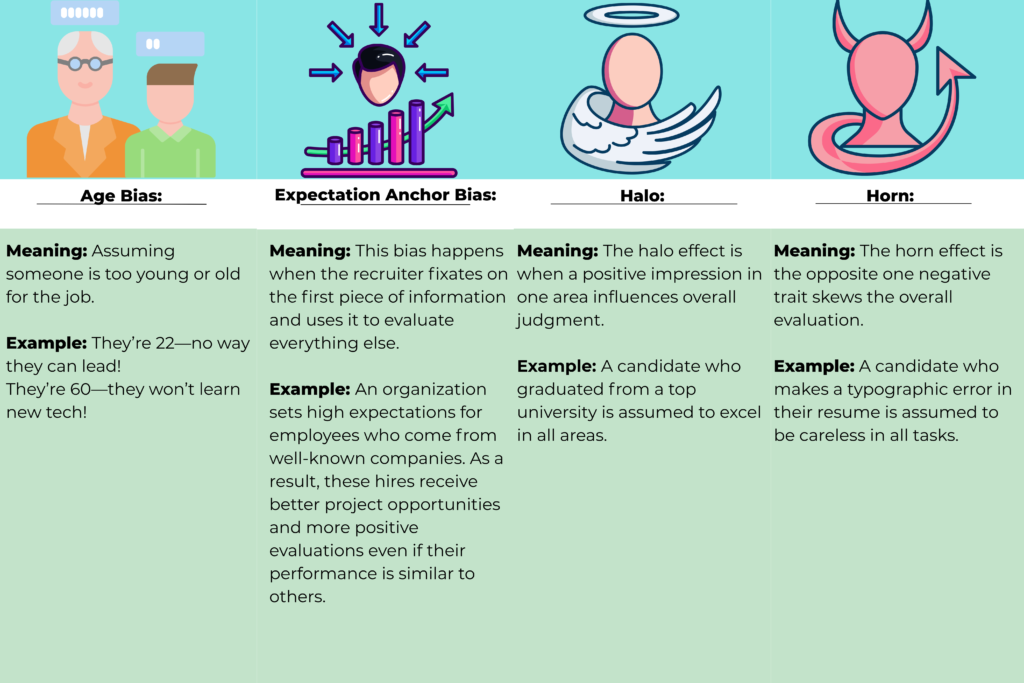

2. Common Biases in Performance Appraisal:
- Attribution bias
- Recency bias
- Strictness/Leniency bias
- Contrast bias
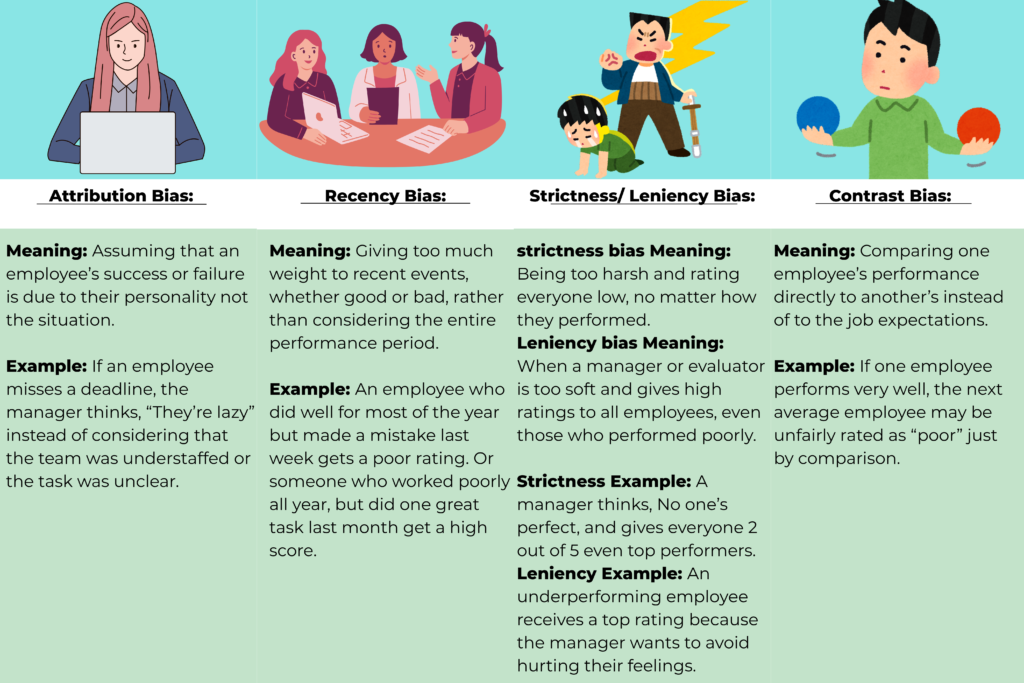

3. Common Biases in Training and Development:
- Availability bias
- Primacy bias
- Overconfidence bias
- cultural bias
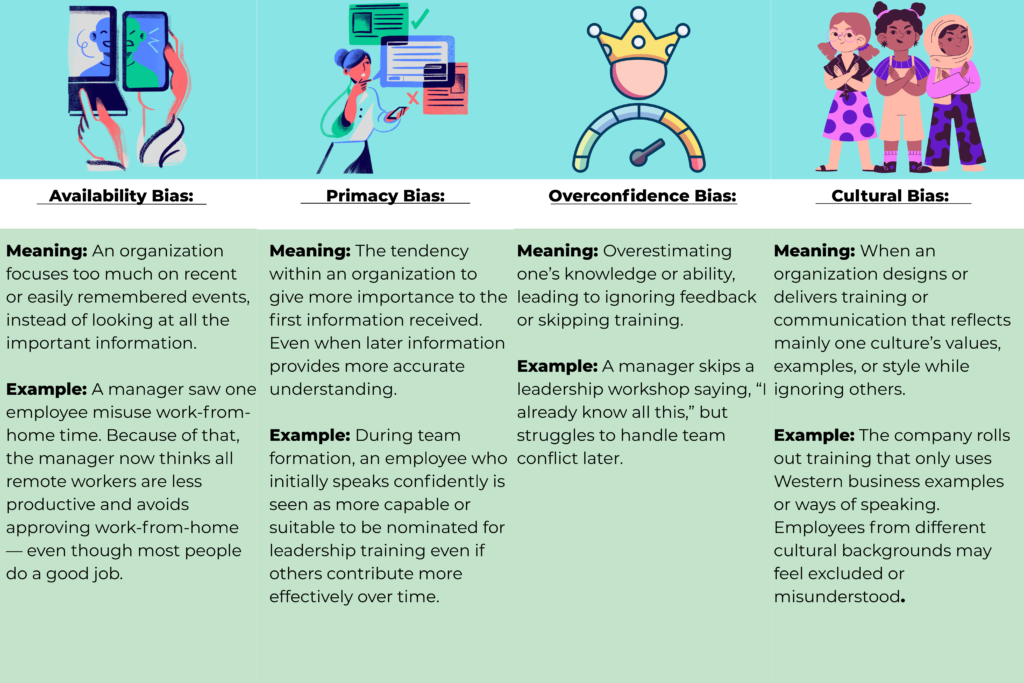

4. Common Biases in Employee Retention:
- Proximity bias
- Likeability bias
- Maternal bias
- Status quo bias
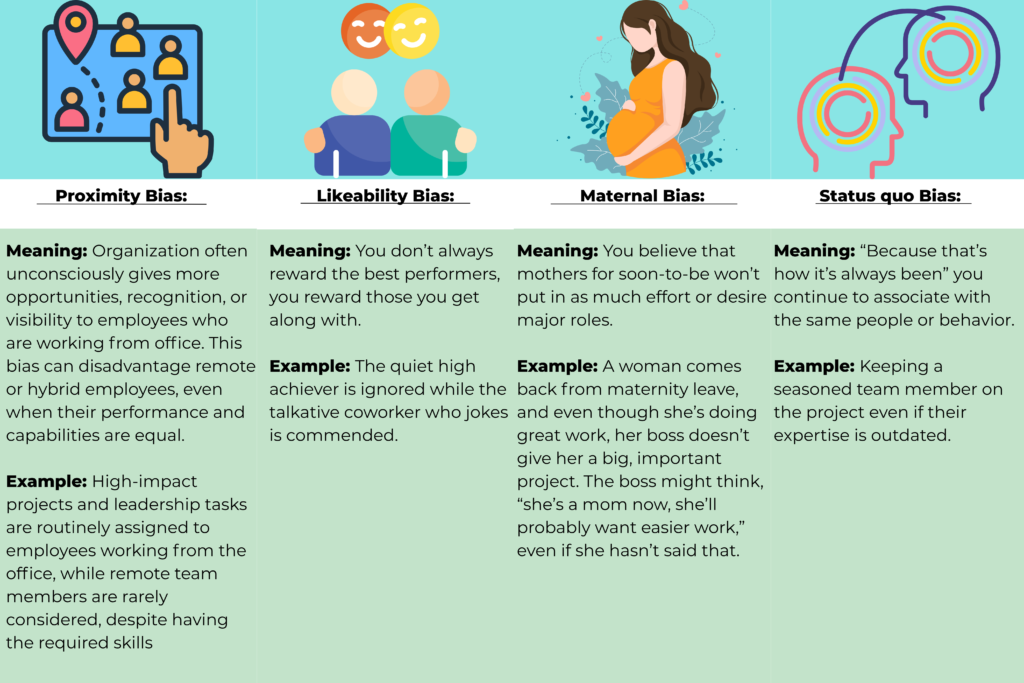

5. Common Biases in Separation, Exit/ Transition:
- In-Group and Out-Group Bias
- Seniority bias
- Final impression bias
- Language bias
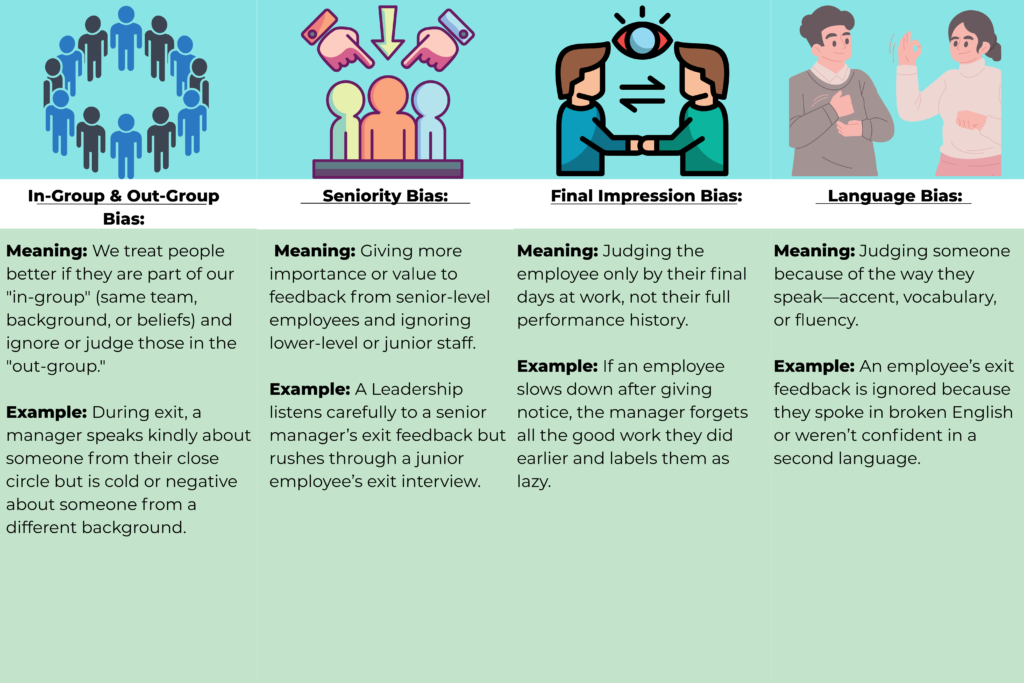

If you’re interested in exploring how your organization can recognize and overcome unconscious bias, we’d love to connect. Reach out to us at connect@ananyawomenatwork.com — whether it’s to ask a question, start a conversation, or begin a journey toward a more inclusive workplace, we’re here to help.

